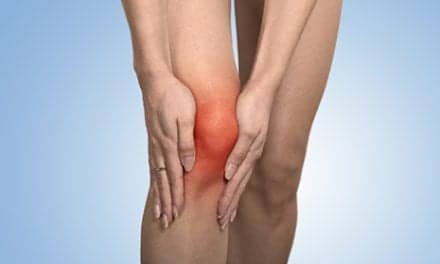
This figure illustrates the two-mass model of the human body and a corresponding pattern of running foot-ground force application developed by the researchers at Southern Methodist University. The overall force-time pattern can be accurately understood as the sum of two parts: 1) the force corresponding to the collision of the lower limb with the ground (dashed red curve); and 2) the force corresponding to the motion of the remainder of the body’s mass (dashed green curve). The sum of the force curves provides the total ground force (solid blue curve). (Image courtesy of Laurence J. Ryan/SMU)
Biomechanics researchers have developed a scientific approach that they suggest accurately predicts a runner’s patterns of foot ground-force application—at all speeds and regardless of foot-strike mechanics.
The team of researchers, from Southern Methodist University in Dallas, note in a study published in the Journal of Experimental Biology that their scientific approach may help enable the use of individualized gait patterns to optimize the design of shoes, orthoses and prostheses.
“The human body is mechanically complex, but our new study indicates that the pattern of force on the ground can be accurately understood from the motion of just two body parts,” says Kenneth Clark, first author on the study and currently an assistant professor in the Department of Kinesiology at West Chester University in West Chester, Pa, in a media release from Southern Methodist University.
“The foot and the lower leg stop abruptly upon impact, and the rest of the body above the knee moves in a characteristic way,” Clark adds. “This new simplified approach makes it possible to predict the entire pattern of force on the ground—from impact to toe-off—with very basic motion data.”
According to the release, this “two-mass model” provides concise, accurate predictions of the ground force versus time patterns throughout each instant of the contact period. It does so regardless of limb mechanics, foot-strike type, and running speed.
“Our model inputs are limited to contact time on the ground, time in the air, and the motion of the ankle or lower limb. From three basic stride variables we are able to predict the full pattern of ground-force application,” states Laurence Ryan, a physicist and research engineer at SMU’s Locomotor Performance Laboratory.
“The approach opens up inexpensive ways to predict the ground reaction forces and tissue loading rates. Runners and other athletes can know the answer to the critical functional question of how they are contacting and applying force to the ground,” he adds.
In their new model, the researchers explain in the release, a runner’s pattern of force application on the ground is due to the motion of two parts of the body: the lower portion of the leg that is contacting the ground, and the sum total of the rest of the body.
The force contributions of the two body parts are each predicted from their largely independent, respective motions during the foot-ground contact period. The two force contributions are then combined to predict the overall pattern. The final prediction relies only upon classical physics and a characteristic link between the force and motion for the two body parts.
The new approach can be used to assess patterns of ground force application by athletes on running tracks and in performance training centers, Clark states.
“The only requirement is a quality high-speed camera or decent motion sensor and our force-motion algorithms,” he adds. “It’s conceivable that even shoe stores would benefit by implementing basic treadmill assessments to guide footwear selection from customer’s gait mechanics using the approach.”
[Source(s): Southern Methodist University, EurekAlert]





